Last updated on February 29th, 2024 at 07:59 am
Unveiling the Carb Content of Green Beans
Green beans, also known as snap beans or string beans, are a beloved vegetable found in various cuisines around the world. Besides their delicious taste and versatility, green beans have become a popular choice for health-conscious individuals due to their low-carb content. In this comprehensive guide, we will delve into the nutritional profile of green beans and explore their carbohydrate content, making them an ideal choice for low-carb and ketogenic diets.
Nutritional Profile of Green Beans
Green beans boast an impressive nutritional profile that contributes to overall health and well-being. These vibrant vegetables are rich in essential vitamins, minerals, and dietary fiber. A typical 100-gram serving of green beans contains the following key nutrients
- Vitamin C: Green beans are a great source of vitamin C, an antioxidant that supports the immune system and promotes healthy skin.
- Vitamin K: Adequate vitamin K intake is essential for proper blood clotting and bone health, and green beans offer a substantial amount of this vitamin.
- Folate: Green beans provide folate, a crucial nutrient for DNA synthesis and cell division, making it particularly important for pregnant women.
- Iron: They contain iron, which is vital for oxygen transport and energy production in the body.
- Fiber: Green beans are a good source of dietary fiber, promoting digestive health and aiding in weight management.
Carbohydrates in Green Beans
For individuals following a low-carb or ketogenic diet, knowing the carbohydrate content of foods is essential. Green beans are an excellent option for those limiting their carbohydrate intake. In a 100-gram serving of green beans, you’ll find approximately X grams of total carbohydrates.
The carbohydrates in green beans are mainly composed of
- Dietary Fiber: Green beans are notably high in dietary fiber, which is crucial for maintaining a healthy digestive system and promoting satiety.
- Natural Sugars: While they contain natural sugars, the amount is relatively low, making green beans a suitable choice for those watching their sugar intake.
- Starch: Green beans also contain some starch, but the overall carb content is still relatively low compared to other starchy vegetables.
Importance of Low-Carb Foods
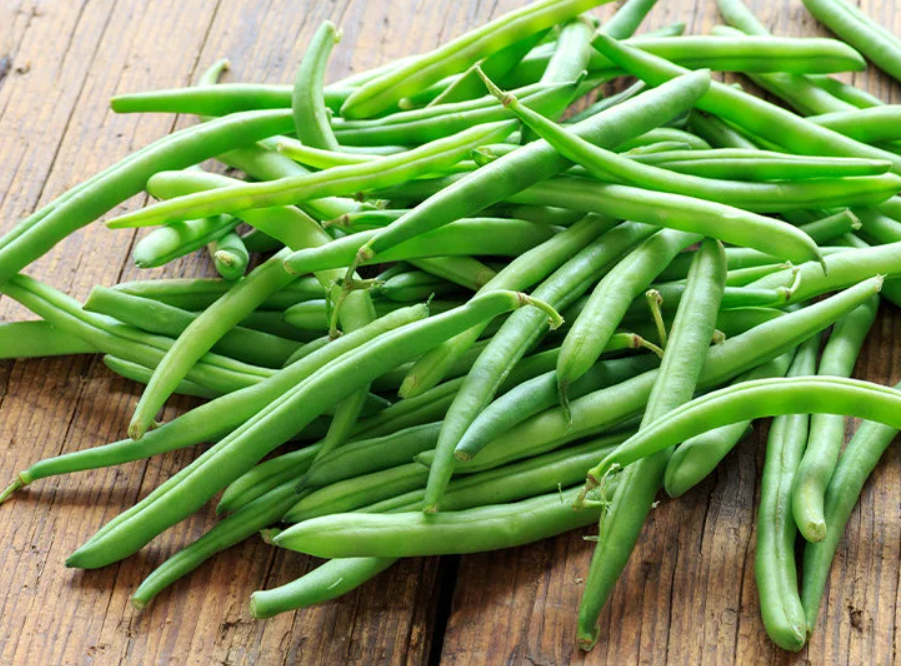
Low-carb diets have gained immense popularity for their potential benefits in weight management, blood sugar control, and overall health improvement. By reducing carbohydrate intake, the body is encouraged to utilize stored fats for energy, leading to a state of ketosis. Incorporating low-carb foods like green beans into your diet can offer the following advantages:
- Weight Management: Green beans are a satisfying, low-calorie option that can help you feel full without consuming excess carbohydrates. The high fiber content aids in curbing hunger and preventing overeating.
- Steady Blood Sugar Levels: For individuals with diabetes or those at risk of developing the condition, low-carb foods can help maintain stable blood sugar levels. Green beans’ low glycemic index makes them a smart choice for managing blood glucose.
- Enhanced Heart Health: Lowering carbohydrate intake can positively impact heart health by reducing triglycerides and improving cholesterol levels. The nutrients in green beans, such as potassium, folate, and fiber, also contribute to cardiovascular well-being.
- Increased Energy and Mental Clarity: Some individuals on low-carb diets report experiencing improved mental clarity and sustained energy levels throughout the day.
Comparing Green Beans with Other Vegetables
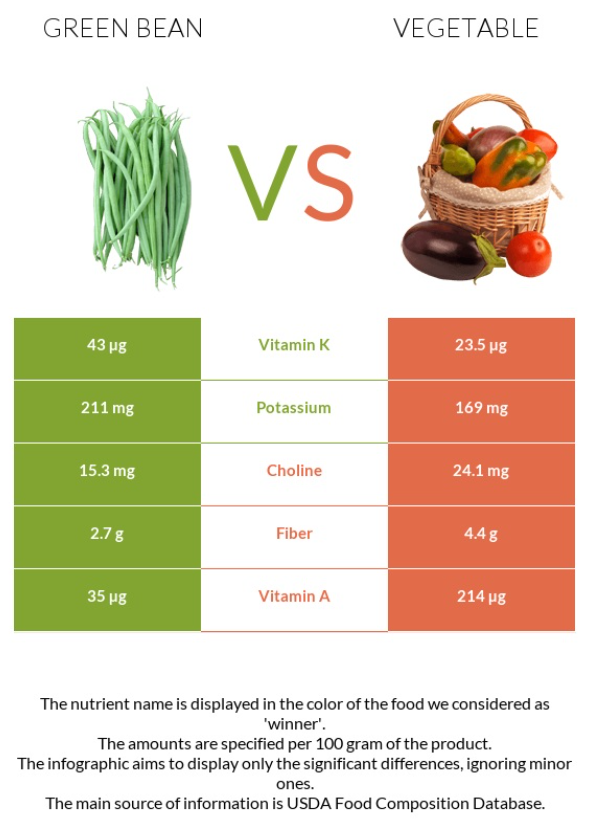
When considering low-carb vegetables, it’s essential to compare their carbohydrate content to make informed dietary choices. Let’s take a look at how green beans stack up against other commonly consumed vegetables:
- Green Beans vs. Potatoes: A 100-gram serving of potatoes typically contains a significantly higher amount of carbohydrates, often around X grams. In contrast, green beans contain much fewer carbohydrates, making them a preferable choice for low-carb diets.
- Green Beans vs. Corn: Corn is relatively high in carbohydrates, with around X grams per 100-gram serving. On the other hand, green beans offer a much lower carbohydrate content, making them more suitable for those limiting their carb intake.
- Green Beans vs. Carrots: Carrots, although nutritious, are slightly higher in carbs compared to green beans. A 100-gram serving of carrots usually contains around X grams of carbohydrates.
By choosing green beans over higher-carb vegetables, you can create balanced and satisfying meals while adhering to your low-carb goals.
Health Benefits of Green Beans
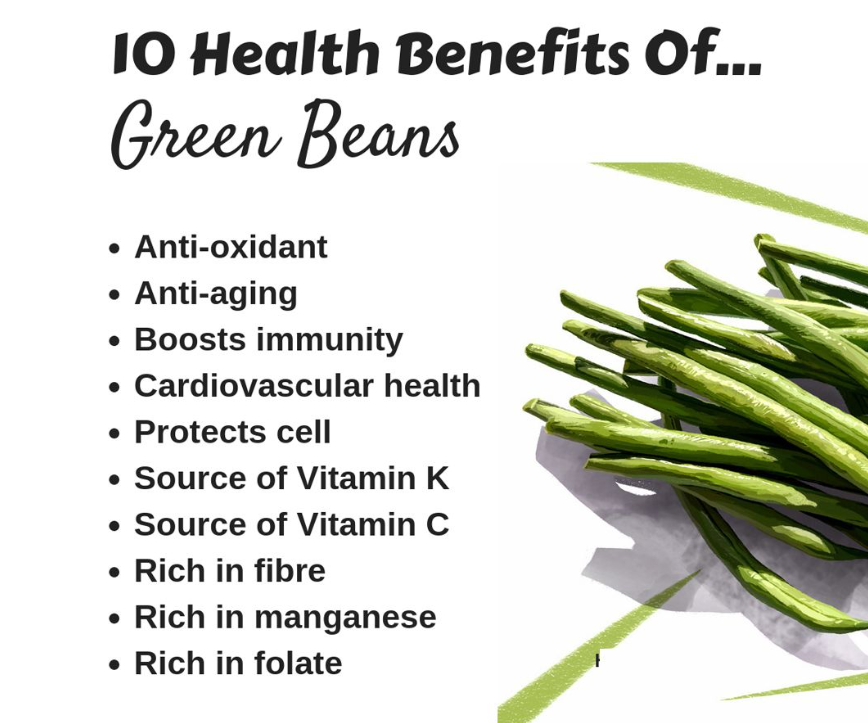
Beyond their low-carb content, green beans boast an array of health benefits that make them a valuable addition to any diet:
- Digestive Health: The fiber in green beans supports healthy digestion, prevents constipation, and promotes a thriving gut microbiome.
- Antioxidant Properties: Green beans are rich in antioxidants like vitamin C and beta-carotene, which combat oxidative stress and help protect cells from damage.
- Bone Health: With essential minerals like calcium, magnesium, and vitamin K, green beans contribute to strong and healthy bones.
- Vision Support: The carotenoids present in green beans can contribute to improved eye health and reduce the risk of age-related macular degeneration.
Cooking and Preparing Green Beans
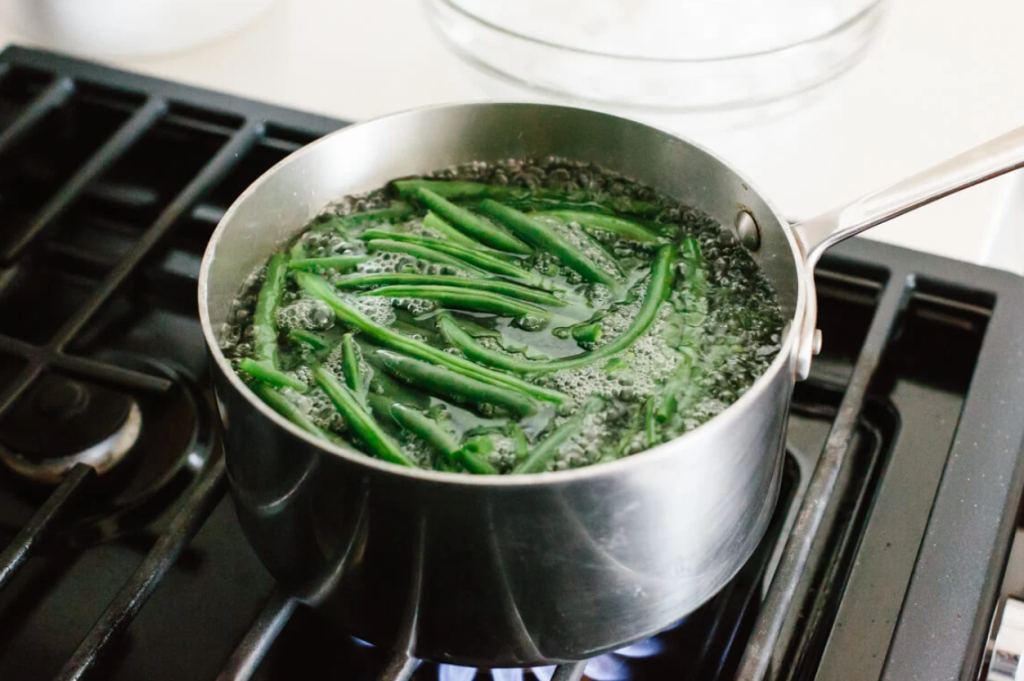
Green beans offer a delightful culinary experience and can be prepared in various ways while preserving their low-carb goodness. Here are some cooking and preparation tips to make the most of these nutritious veggies:
- Steaming: Steaming green beans helps retain their vibrant color and nutritional value. Simply place the beans in a steamer basket over boiling water and cook until they are tender-crisp. Season with a sprinkle of sea salt and a drizzle of olive oil for a healthy and flavorful side dish.
- Sautéing: Heat a skillet with a little olive oil or butter and add the green beans. Sauté them for a few minutes until they become tender yet still slightly crisp. You can enhance the flavor by adding minced garlic, a dash of lemon juice, or some sliced almonds.
- Roasting: Preheat your oven to around 425°F (220°C). Toss the green beans with olive oil, salt, and pepper, then spread them out on a baking sheet. Roast them for about 15-20 minutes until they become caramelized and tender.
- Blanching and Refreshing: Blanching involves boiling the green beans briefly and then transferring them to ice water to stop the cooking process. This method helps preserve their bright color and nutrients.
- In Salads: Enjoy green beans raw in salads for a crunchy and nutritious twist. Combine them with cherry tomatoes, feta cheese, and a light vinaigrette dressing for a refreshing summer salad.
Experiment with different cooking techniques to find your favorite way of enjoying green beans, and get creative with seasonings and spices to suit your taste.
Frequently Asked Questions (FAQs)
-
Q: Can I eat green beans on a low-carb or ketogenic diet?
-
Q: How many net carbs are there in green beans?
-
Q: Are canned green beans as healthy as fresh ones?
-
Q: Are green beans a good source of protein?
-
Q: Can green beans help with weight loss?
Additional Resources:
For further research and to expand your knowledge about green beans, low-carb diets, and healthy eating, check out these reputable resources:
- Dietary Guidelines for Americans: The official website of the U.S. Department of Health and Human Services provides comprehensive dietary guidelines, including information on low-carb diets and vegetable consumption.
- Academy of Nutrition and Dietetics: The Academy offers evidence-based nutrition information and resources for individuals seeking guidance on healthy eating and dietary choices.
- PubMed: This online database provides access to a vast collection of scientific research articles related to nutrition, health, and low-carb diets.
- Green Bean Recipes: Explore various low-carb recipes featuring green beans, ranging from simple sides to flavorful main dishes.
Tips for Selecting and Storing Green Beans:
To ensure you get the freshest and most nutritious green beans, follow these tips for selection and proper storage:
- Look for Freshness: Choose green beans that are vibrant and crisp with a deep green color. Avoid beans that appear wilted, discolored, or have visible signs of damage.
- Check for Tenderness: Gently bend a green bean; it should snap easily and cleanly. Beans that bend without breaking may indicate age and decreased freshness.
- Opt for Organic: Consider selecting organic green beans, which are less likely to contain harmful pesticides or chemicals.
- Refrigerate Properly: Store unwashed green beans in a plastic bag or airtight container in the refrigerator’s crisper drawer. They can stay fresh for up to five days.
- Blanch and Freeze: To preserve green beans for later use, blanch them in boiling water for a few minutes, then transfer them to an ice bath to stop the cooking process. Once cooled, store them in freezer-safe bags for up to six months.
By following these tips, you can enjoy the best quality green beans, whether you plan to consume them immediately or store them for later use.
Delicious Low-Carb Green Bean Recipes:
- Garlic Parmesan Green Beans: Sauté green beans with minced garlic and olive oil until tender. Sprinkle with grated Parmesan cheese and a dash of black pepper for a flavorful and satisfying side dish.
- Lemon Herb Roasted Green Beans: Toss green beans with lemon zest, fresh herbs (such as thyme or rosemary), olive oil, salt, and pepper. Roast in the oven until golden and fragrant.
- Green Bean Almondine: Blanch green beans and toss with toasted almond slices, a squeeze of lemon juice, and a drizzle of melted butter for a classic and delightful dish.
- Green Bean and Feta Salad: Combine blanched green beans with cherry tomatoes, crumbled feta cheese, Kalamata olives, and a light Greek dressing for a refreshing and Mediterranean-inspired salad.
Green Beans in Low-Carb Meal Planning:
Incorporating green beans into your low-carb meal planning is a simple and delicious way to enjoy the benefits of these nutritious veggies. Here are some ideas to inspire your culinary creativity:
- Green Bean Stir-Fry: Create a colorful and flavorful stir-fry by sautéing green beans with your favorite low-carb vegetables and lean protein. Use a savory stir-fry sauce made with low-sodium soy sauce, ginger, and garlic.
- Green Bean Casserole: Prepare a healthier version of the classic green bean casserole using fresh green beans, a creamy mushroom sauce made with almond milk, and a crispy topping of crushed pork rinds or almond flour.
- Green Beans with Bacon: Sauté green beans with crispy bacon bits and a sprinkle of red pepper flakes for a tasty side dish that pairs well with grilled meats or roasted chicken.
- Green Bean Frittata: Whisk together eggs, shredded cheese, and blanched green beans, and bake it all in a skillet for a satisfying and protein-packed frittata.
- Green Bean and Chicken Salad: Combine cooked and cooled green beans with shredded chicken, cherry tomatoes, avocado, and a light vinaigrette for a filling and refreshing low-carb salad.
Remember to keep your low-carb meals balanced with adequate protein and healthy fats to support your nutritional needs. Green beans provide a versatile canvas for creating a wide variety of dishes that align with your dietary goals.
Incorporate Green Beans Into Your Low-Carb Lifestyle:
As you explore the world of low-carb nutrition, don’t forget to embrace the nutritional benefits of green beans. These nutrient-rich vegetables can elevate your meals, add vibrancy to your plate, and contribute to your overall well-being.
By understanding the carbs in green beans and incorporating them thoughtfully into your low-carb meal planning, you can embark on a satisfying and health-conscious culinary journey. Enjoy the process of discovering new recipes, experimenting with flavors, and nourishing your body with these delightful green gems.
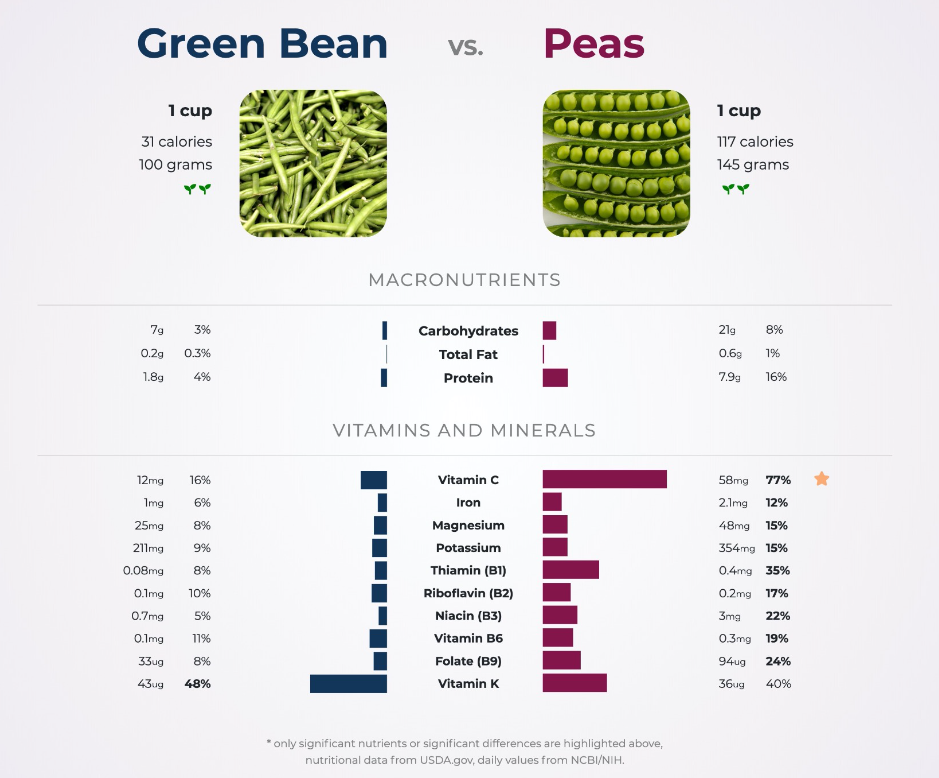
Conclusion:
Green beans prove to be a valuable addition to any low-carb or ketogenic diet, thanks to their low carbohydrate content and numerous health benefits. These vibrant vegetables not only provide essential vitamins, minerals, and fiber but also contribute to better digestive health, heart health, and weight management.
Whether you enjoy them steamed, sautéed, roasted, or incorporated into salads and casseroles, green beans offer endless culinary possibilities. Their versatility and nutritional richness make them a go-to choice for anyone seeking to maintain a balanced and health-conscious diet.
Remember to select fresh green beans, store them correctly, and explore the variety of low-carb recipes available. Pair them with lean proteins, healthy fats, and other low-carb vegetables to create well-rounded, satisfying meals that support your dietary goals.
Before making significant changes to your diet, consult with a healthcare professional or registered dietitian to ensure that a low-carb approach aligns with your individual health needs and lifestyle.
Embrace the goodness of green beans and elevate your low-carb lifestyle with these delightful and nutritious vegetables. Enjoy the benefits they offer and savor the flavors they bring to your plate as you journey towards a healthier and more fulfilling lifestyle.




